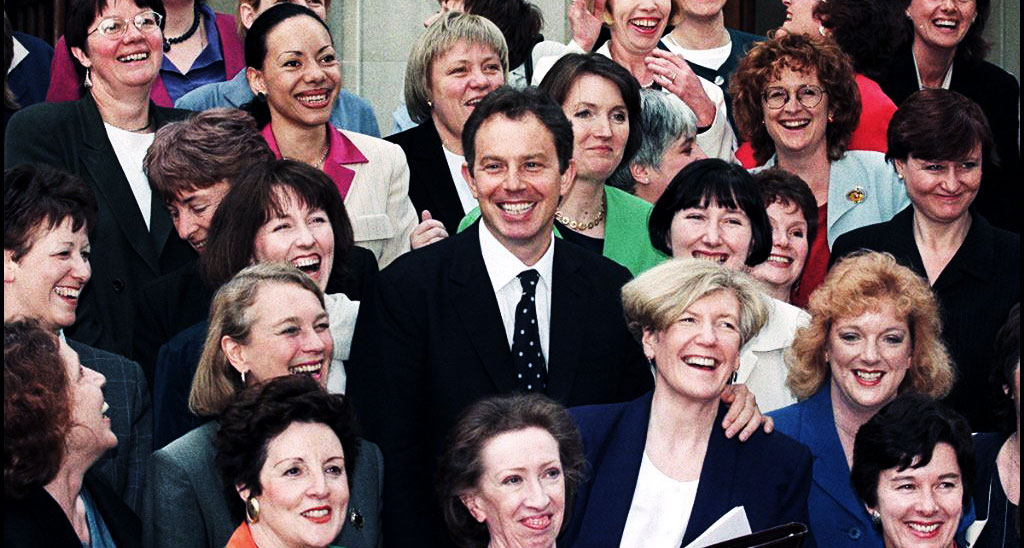According to the Electoral Reform Society, hundreds of Parliamentary seats are effectively “reserved” by men. A new study concedes that that all the parties are doing much better at increasing women’s representation at Westminster, but it also claims that our electoral system is “blocking” progress towards greater equality.
The progress is impressive. Of MPs first elected in 2015, for example, 45 per cent are women, and though fewer women were elected as first-time MPs in 2017, it’s still – at 37 per cent – much more balanced than among those first elected years ago. These changes are welcome and to celebrate them is uncontroversial.
What is not, at first sight, clear is the ERS’s claim that long-standing MPs in safe seats are somehow unfairly impeding women. The ERS says that 75 per cent of those who have held their constituencies since 2010 are male, while, of the 143 MPs first elected in 2001, 85 per cent are men. It seems blindingly obvious that, if parties are now much better at selecting women candidates, those selected in the past are more likely to have been men. Otherwise we could hardly call it progress.
It follows that those who have been in Parliament for years, because they are in the safest seats, are more likely to be men. The historical reluctance of constituencies to select female candidates may have been unfair, but it also means that to say more of the longest-serving MPs are men, compared with more recent arrivals, is about as surprising as saying that more of them are older.
Nor is it odd, given previous attitudes, that women have a better chance in less safe seats. It is in the nature of marginal seats that they change hands, and that they attract newer candidates each time – and obviously, the more recently a seat has been won by a new candidate, the more likely it is that she’ll be a woman.
It’s odd, then, that the ERS presents these unsurprising figures as evidence of continuing inequality – while admitting that representation has now moved much closer to parity. It does so because there are only two straightforward means of bringing long-held seats into line with the current norm.
One would be to force the retirement (or mandatory reselection) of MPs and to hope that new female candidates would fare better in the subsequent selection process. The problem is that, as even the ERS would surely acknowledge, it’s not really their business to impose such a change.
The selection of candidates is a matter for political parties. Indeed, as internal rows on mandatory reselection have shown in both the Labour and Conservative parties, many political activists believe it is not even a matter for the central body of their party, but one for constituency associations to decide.
If they believe their MP is doing a good job (one part of which, naturally, includes winning elections) it’s not altogether astonishing that they might want to hang on to him or her, even if it’s more likely to be him.
That leaves the other obvious method to deal with the safe-seat blockers, which is to change the means by which MPs are elected, and thus make seats which are currently safe more contestable for new candidates – of whom more, these days, are likely to be women.
Amazingly, the Electoral Reform Society comes out in favour of this solution. Despite its laudable concern for increasing women’s representation at Westminster, the primary purpose of the Electoral Reform Society (the clue is in the name), and its solution for all inequality, is to lobby for the replacement of the first-past-the-post voting system (FPTP) with proportional representation. It even advocates a particular form of PR: the single transferable vote, or STV.
There is a compelling case for STV in preference to FPTP. (The same can’t be said for the Alternative Vote – though the ERS still backed it in the 2011 referendum, when voters overwhelmingly rejected it.) It includes the fact that it is fairer to minority parties and those in safe seats who feel their vote doesn’t count. But STV is not perfect: it gives too much power to political parties rather than voters, and diminishes the connection between MPs and their constituents.
There are good arguments, too, for FPTP. It establishes a connection between candidate and electorate, rather than party, and emphasises local issues. It’s used in the vast majority of elections in democratic countries: Canada, the US and India don’t seem to find it too old-fashioned.
What there is no good argument for is the notion that the electoral system should primarily be about producing absolute fairness and proportionality, in terms of sexual equality, ethnic minority representation, or any other criteria. It cannot be: no electoral system can be entirely fair, not least because people’s view of what is fair differs. The most that any system of representative democracy can do is strive for fairness while balancing clarity, accountability, proportionality, workability and other factors.
The “representative” bit of representative democracy was famously explained by Edmund Burke in 1774 when he told the electors of Bristol that: “Your representative owes you, not his industry only, but his judgment; and he betrays, instead of serving you, if he sacrifices it to your opinion.” They voted him out six years later.
Public opinion, and that of political parties, has moved towards much more equal selection of candidates; increased representation of women and minorities is the welcome result. But all change happens over time.
There are respectable cases for electoral reform. The notion that longer-serving MPs who keep getting returned by the voters are akin to NHS “bed-blockers”, and that the electoral system should be changed just to turf them out in the name of progress, isn’t one of them.


